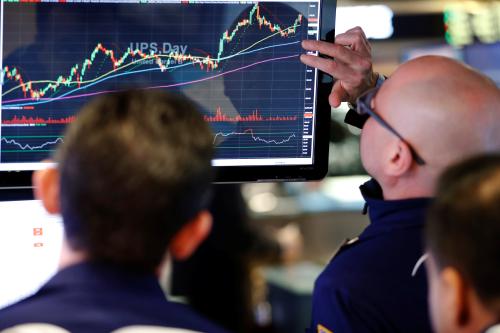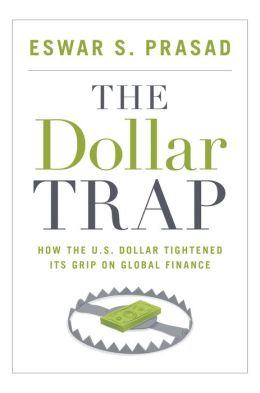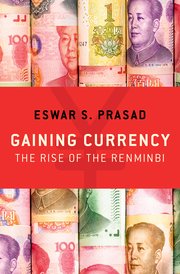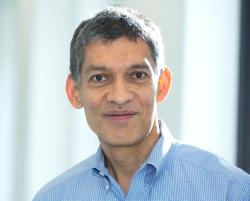This commentary is based on research and analysis from the April 2017 update of Tracking Indexes for the Global Economic Recovery (TIGER). The Financial Times also publishes TIGER, which appears on the Financial Times web site.
The global economic recovery now looks like it’s for real. The latest update to the Brookings-FT Tiger index shows that, after numerous fits and false starts, the recovery has become broad-based and stable, even if not vigorous. The advanced economies are settling into a reasonable growth path, with the specter of deflation having been staved off. The fast-growing emerging market economies such as China and India have gotten through a rocky period and even the more vulnerable emerging markets have turned the corner.
The calm on the surface is belied by swirling undercurrents of political and policy uncertainty. Brexit, Trump’s election victory, and rising populist and nationalist tendencies in many western democracies pose significant risks to stable policymaking. The Trump administration’s protectionist inclinations have injected a large dose of uncertainty into global trade. Heightened political tensions in the Middle East and in the Korean peninsula, which remain volatile powder kegs, also have the potential to destabilize both the regional and world economies.
The U.S. economy continues to enjoy a steady if unspectacular expansion, with decent GDP growth, strong retail sales and industrial production, as well as robust consumer and business confidence. U.S. financial markets appear to have been buoyed by the prospects of weaker business regulation, tax cuts, and a fiscal boost. The debate about whether or not to tighten monetary conditions appears to have given way to a debate about how quickly the Fed should do so. Despite all these positive developments, the underlying growth dynamics remain weak, as reflected in lackluster growth in investment, productivity, and real wages.
Even the eurozone, long the laggard in terms of the recovery among advanced economies, looks set for a year of reasonable growth across the board. Deflationary pressures have eased and employment growth has picked up. Many of the underlying stresses, including banking sector weaknesses, have not been eliminated but appear to be in abeyance. Political uncertainties, particularly those related to election outcomes in France and Germany, continue to cloud the policy environment.
The recovery in Japan appears to be on firmer footing than a year ago. Despite a recent strengthening of the yen, deflationary pressures have eased and a broad array of indicators such as GDP, employment, exports, and retail sales show signs of strength. The U.K. economy continues to do better than expected after the Brexit vote shock. However, the reality of the exit with Article 50 now triggered and the looming tough negotiations with the European Union portend a period of heightened uncertainty that could hurt business and consumer confidence, dampening domestic demand.
Emerging market economies have survived fears of capital outflows and other volatility emanating from tightening monetary conditions in the U.S. and continued monetary policy divergence among the Fed, Bank of Japan, and European Central Bank.
China seems to be locked into steady growth around its target of around 6.5 percent. With a high-level leadership transition coming up at the end of this year, stability has become the watchword. The government is likely to maintain a tight grip on the economy and financial markets, keep a lid on capital outflows, and avoid any major reforms. Consequently, economic tensions and vulnerabilities could continue to build up, especially in the financial system, although they are unlikely to surface this year.
India remains the fastest-growing major economy in the world. Industrial output has picked up but credit growth remains weak and could constrain manufacturing growth. A big victory in a recent important state election has provided political validation for Prime Minister Modi’s demonetization initiative, and gives him additional political capital for deep-rooted structural reforms, which remain key to unlocking India’s long-term growth potential.
Growth in Brazil and Russia remains negative, although the two economies may be able to avoid further contractions in GDP this year if commodity prices, industrial production, and private sector sentiment hold up. Political turmoil continues to wrack many emerging market economies such as Brazil, Turkey, and Venezuela, all of which remain vulnerable to both domestic and external shocks.
This year is shaping up as one where the apparent economic calm on the surface is offset by rising economic stresses and political tensions that could bubble up and undercut the recovery in 2018 or beyond. Low investment and weak productivity growth make the recovery’s durability questionable while political ferment, protectionist policies, and lack of progress on the reform agenda in most countries could hurt both the quality and sustainability of growth. 2017 is not a year to worry about in itself but a good time to worry about what the future holds.
Eswar Prasad is a professor in the SC Johnson College of Business at Cornell University and a senior fellow at the Brookings Institution. Karim Foda is a senior research associate at Brookings.








Commentary
Op-edThis recovery is for real, but can it last?
April 16, 2017